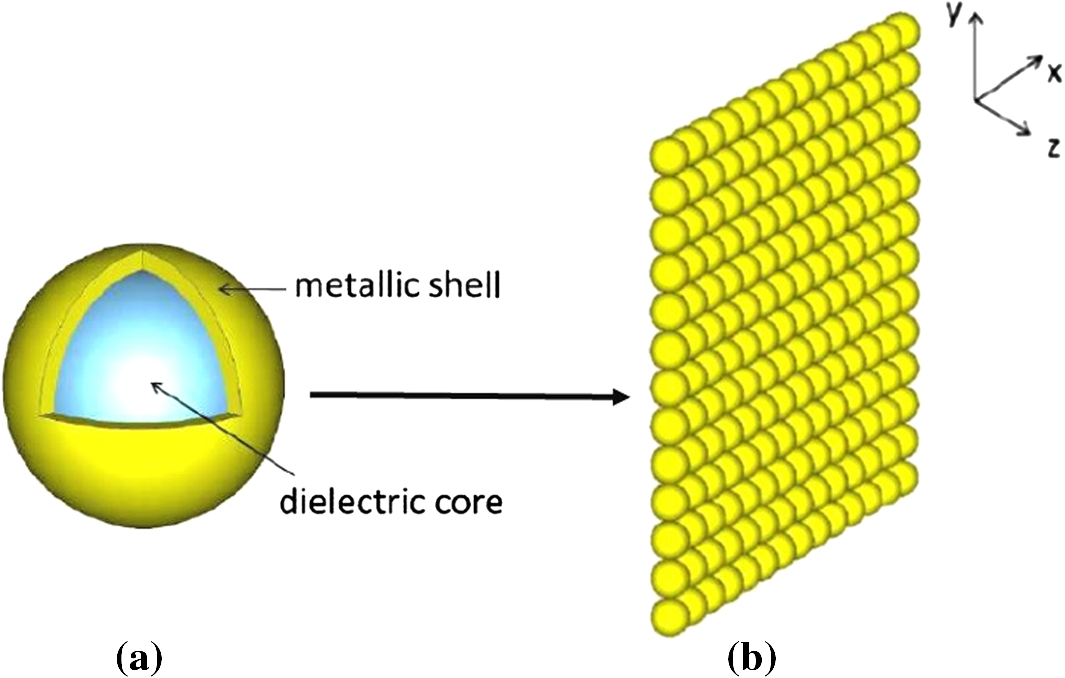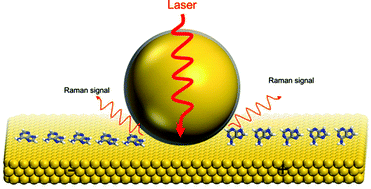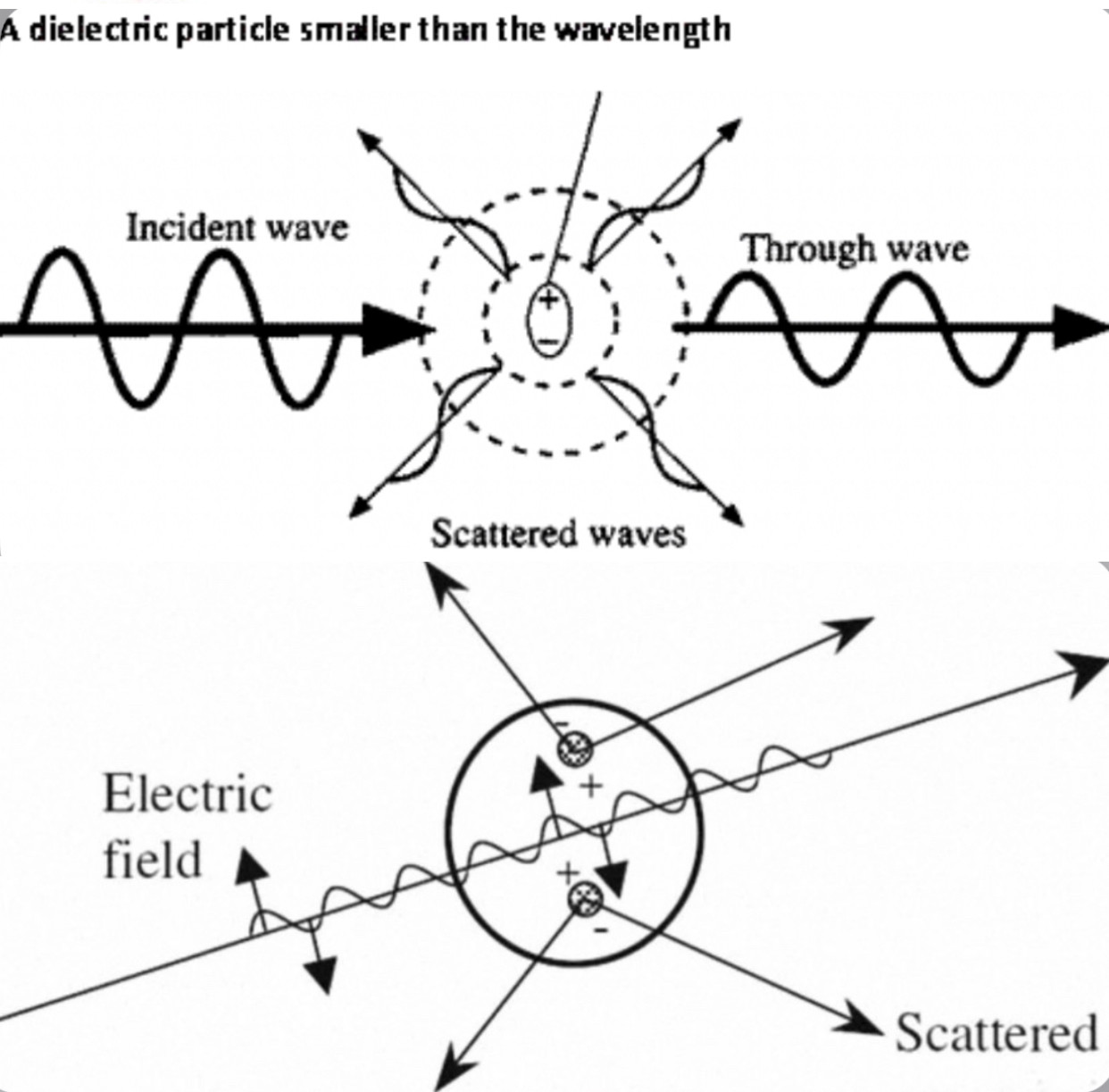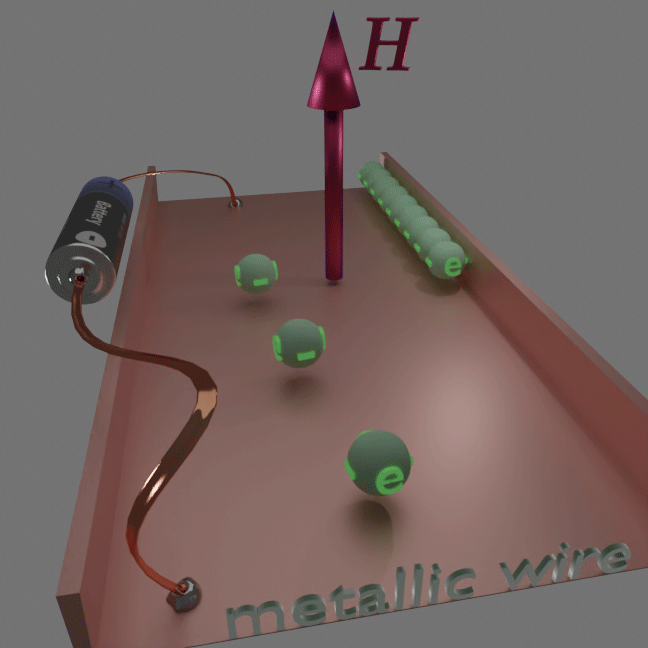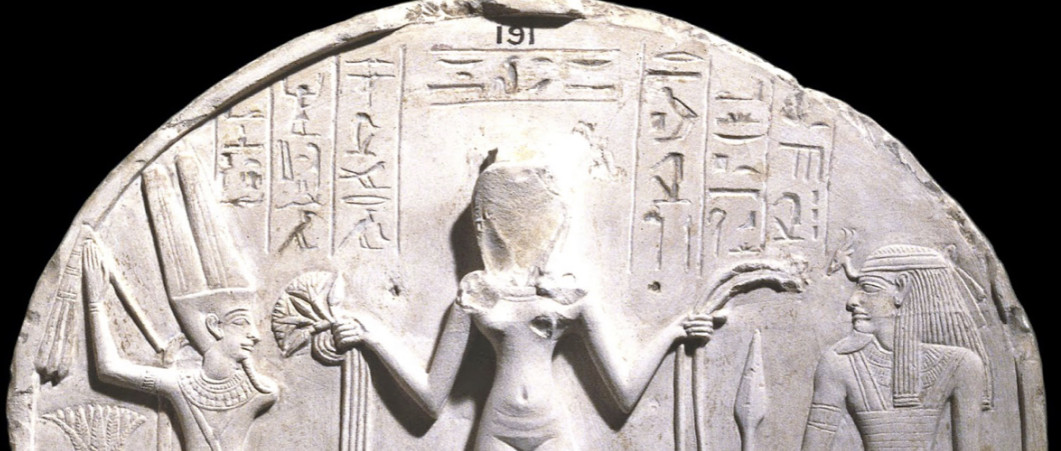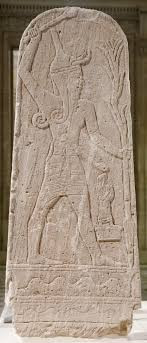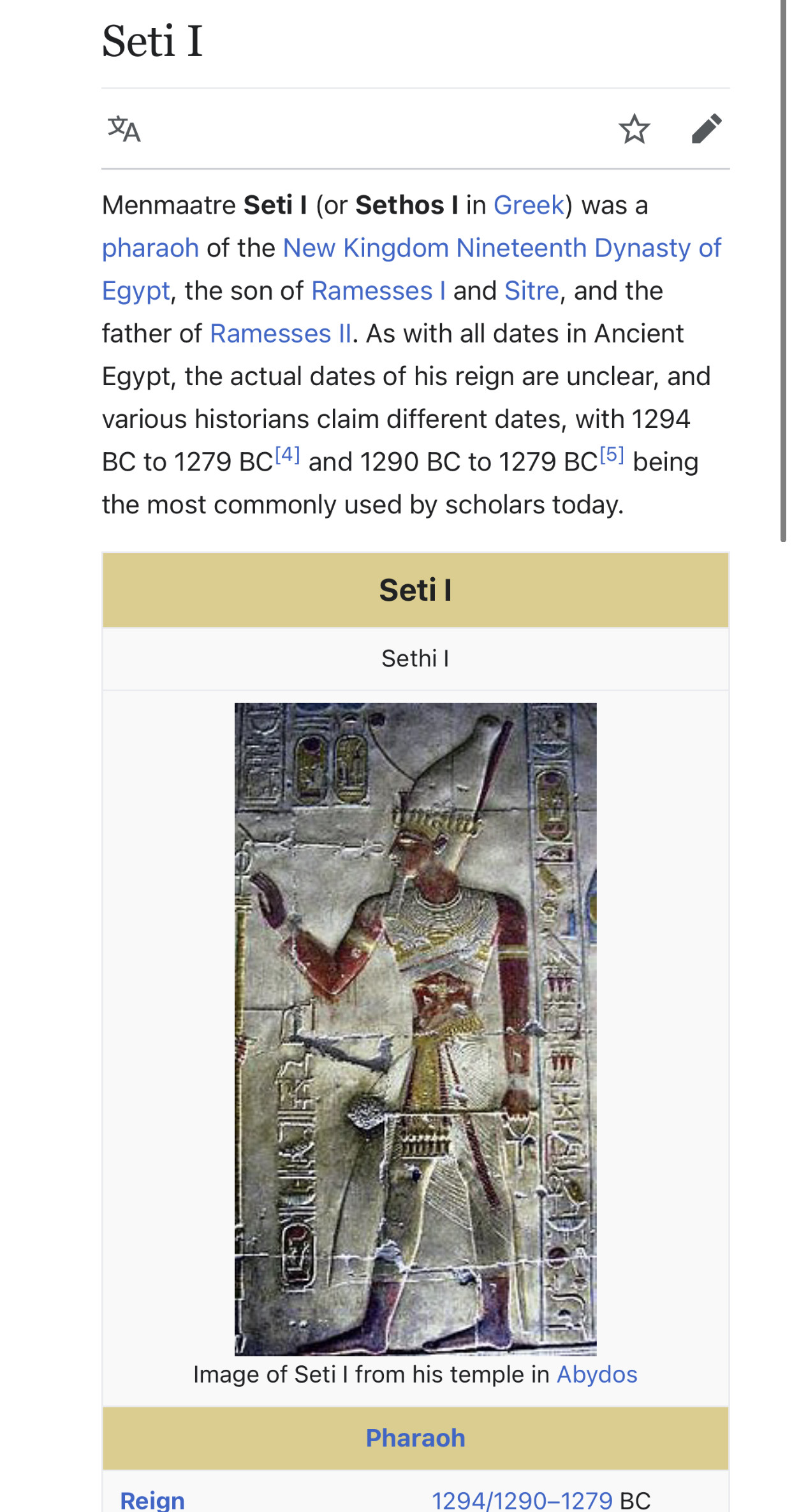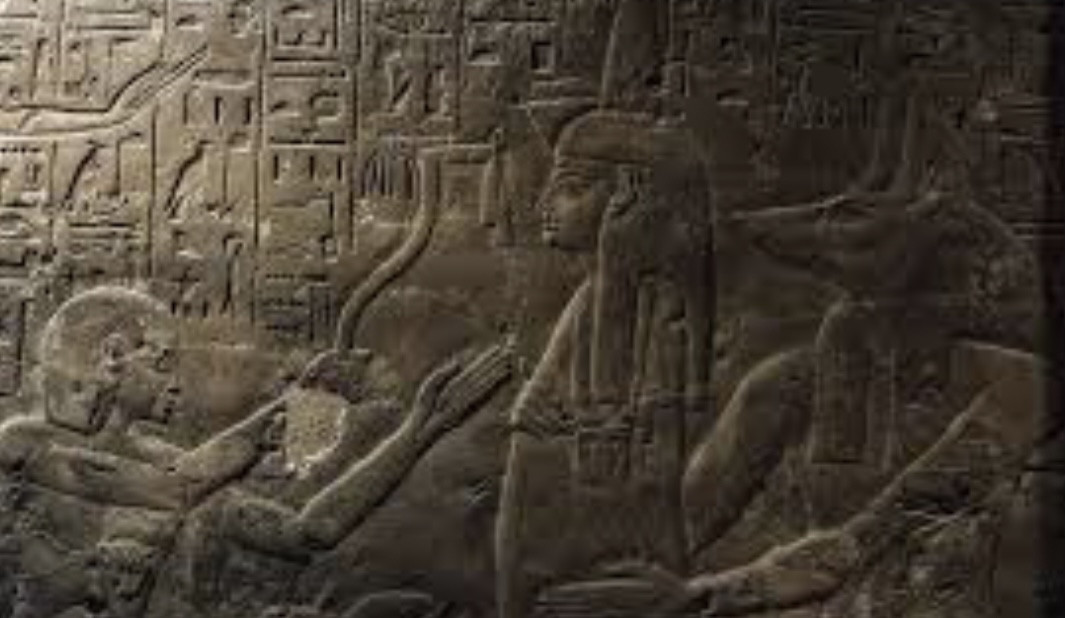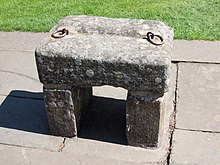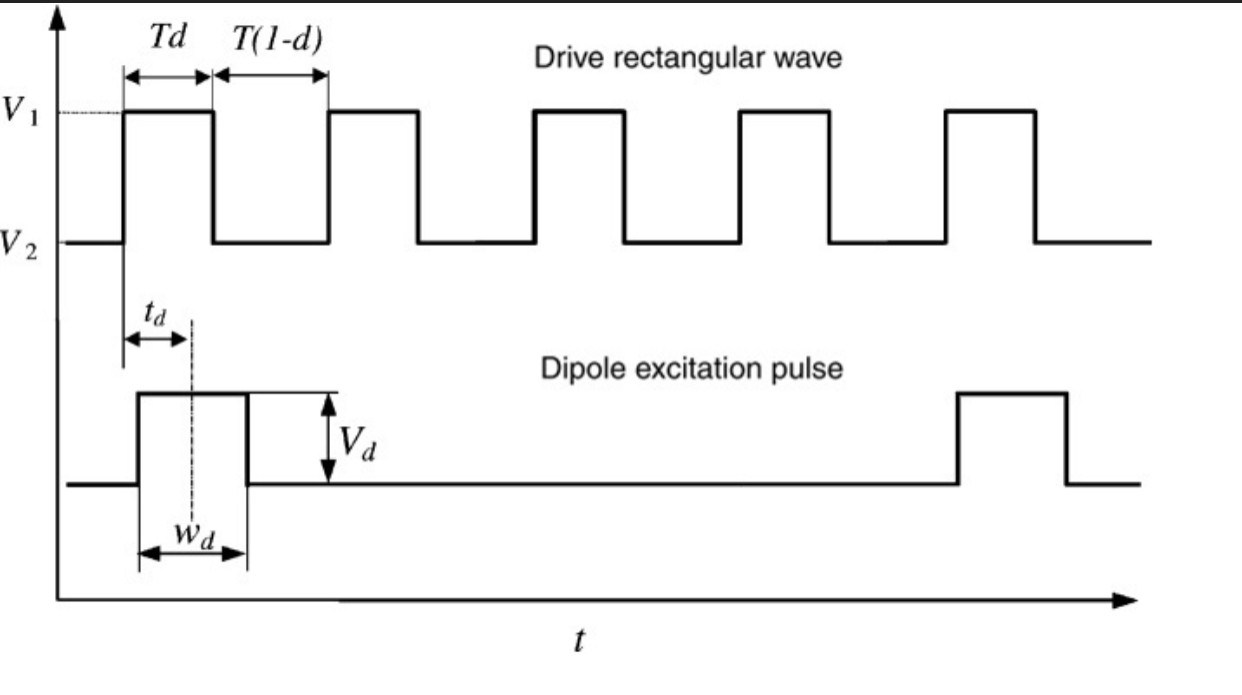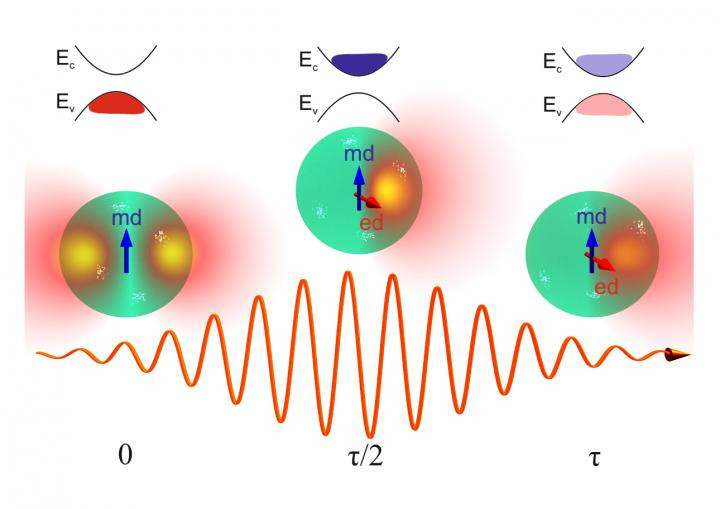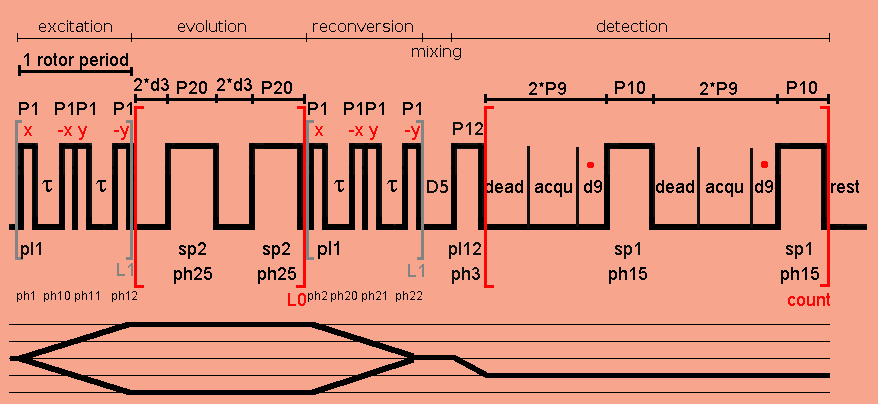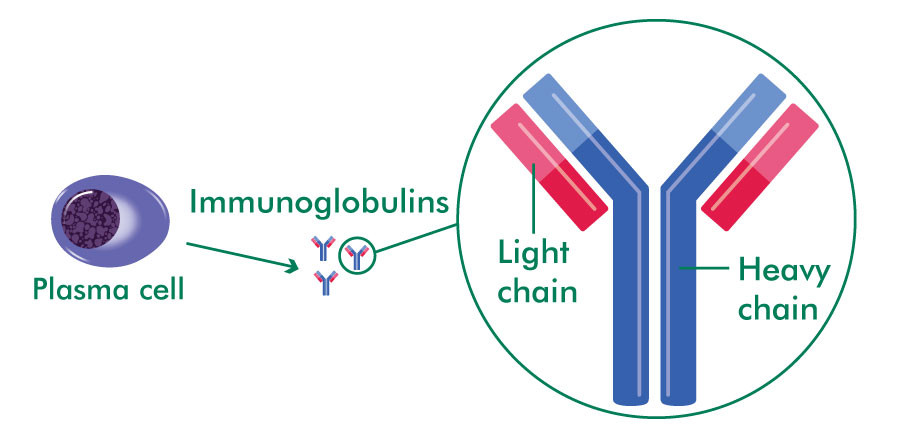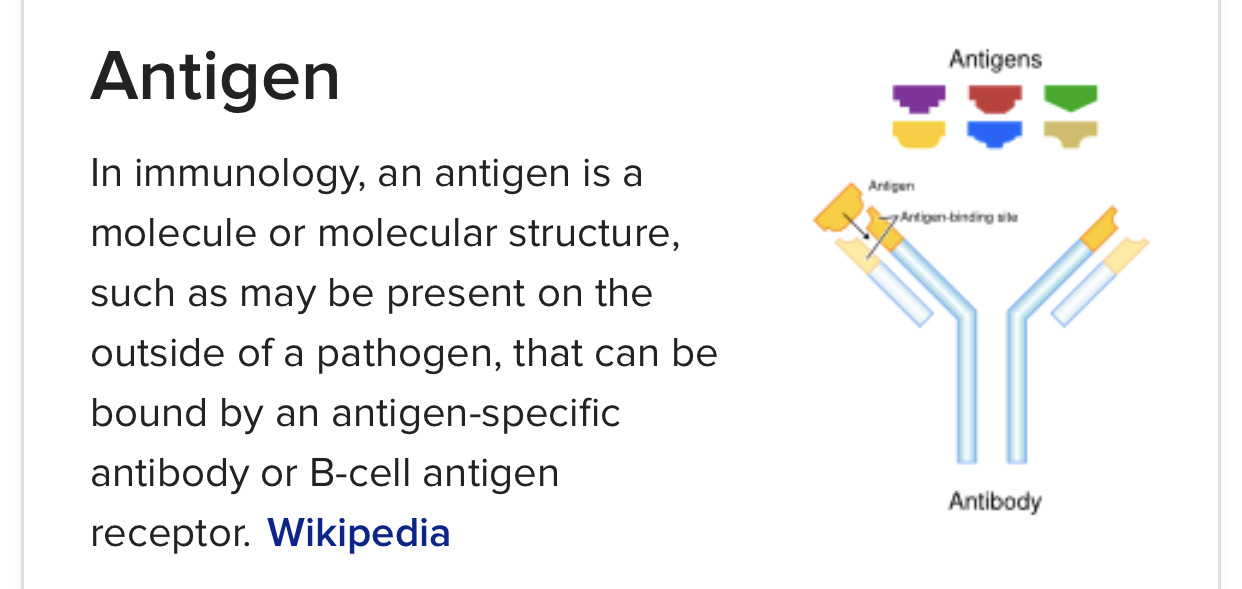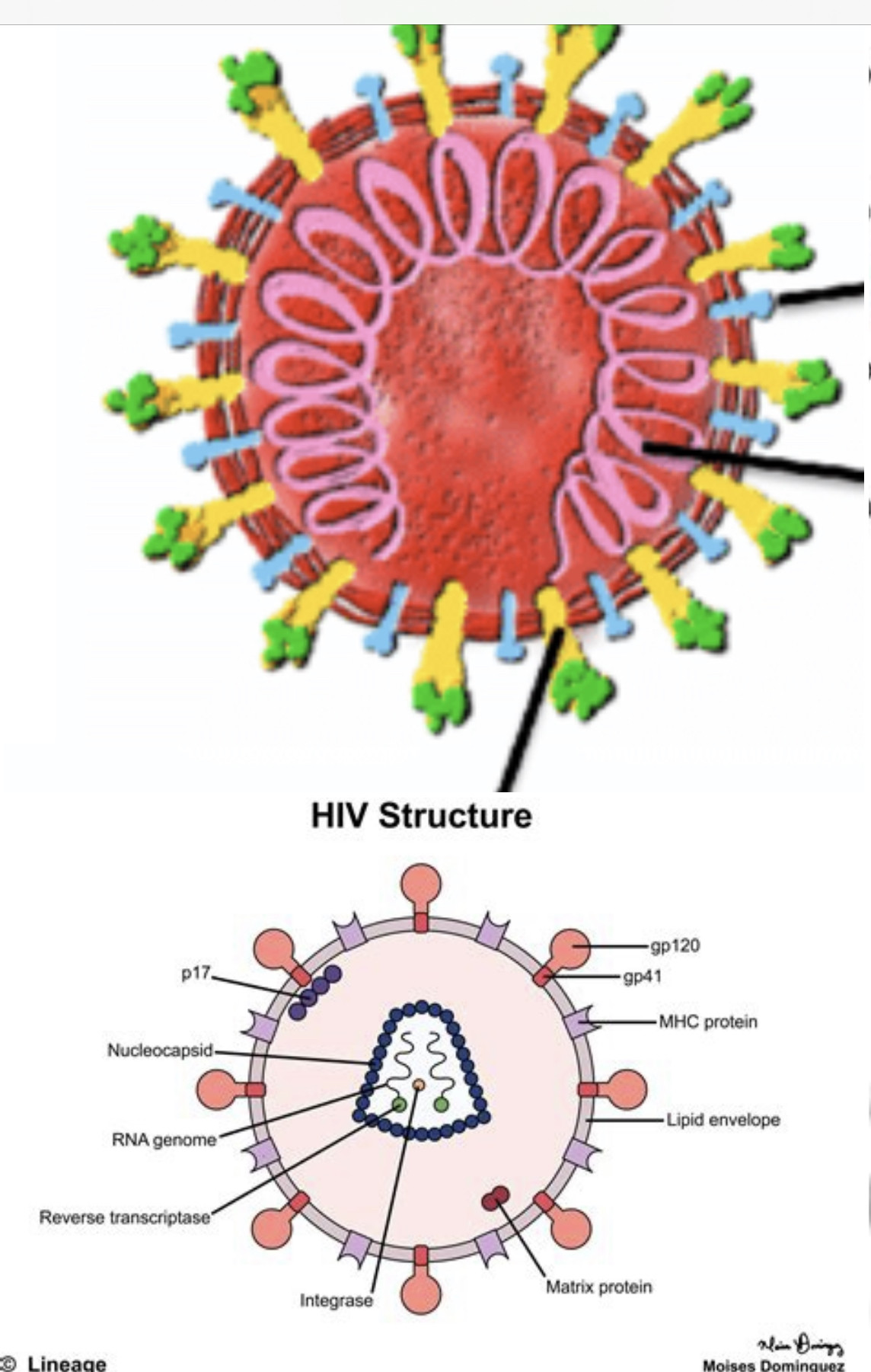The Mac
@TheMac
24 July, 06:26
Notice: Undefined index: tg1tga_access in /home/admin/www/anonup.com/themes/default/apps/timeline/post.phtml on line 396
24 July, 06:28
In response The Mac to his Publication
We will be able to do that without devices soon. I prefer my entanglements to be natural.😉
Notice: Undefined index: tg1tga_access in /home/admin/www/anonup.com/themes/default/apps/timeline/post.phtml on line 396
The Mac
@TheMac
24 July, 07:11
In response Photon 333 to her Publication
Notice: Undefined index: tg1tga_access in /home/admin/www/anonup.com/themes/default/apps/timeline/post.phtml on line 396
The Mac
@TheMac
24 July, 07:19
In response The Mac to his Publication
Notice: Undefined index: tg1tga_access in /home/admin/www/anonup.com/themes/default/apps/timeline/post.phtml on line 396
The Mac
@TheMac
24 July, 07:21
In response The Mac to his Publication
Notice: Undefined index: tg1tga_access in /home/admin/www/anonup.com/themes/default/apps/timeline/post.phtml on line 396
The Mac
@TheMac
24 July, 07:22
In response The Mac to his Publication
Notice: Undefined index: tg1tga_access in /home/admin/www/anonup.com/themes/default/apps/timeline/post.phtml on line 396
The Mac
@TheMac
24 July, 07:23
In response The Mac to his Publication
Notice: Undefined index: tg1tga_access in /home/admin/www/anonup.com/themes/default/apps/timeline/post.phtml on line 396
The Mac
@TheMac
24 July, 07:25
In response The Mac to his Publication
Notice: Undefined index: tg1tga_access in /home/admin/www/anonup.com/themes/default/apps/timeline/post.phtml on line 396
The Mac
@TheMac
24 July, 07:27
In response The Mac to his Publication
Notice: Undefined index: tg1tga_access in /home/admin/www/anonup.com/themes/default/apps/timeline/post.phtml on line 396
The Mac
@TheMac
24 July, 07:29
In response The Mac to his Publication
Notice: Undefined index: tg1tga_access in /home/admin/www/anonup.com/themes/default/apps/timeline/post.phtml on line 396
The Mac
@TheMac
24 July, 07:32
In response The Mac to his Publication
trickle
/ˈtrɪk(ə)l/
verb
1.
(of a liquid) flow in a small stream.
"a solitary tear trickled down her cheek"
/ˈtrɪk(ə)l/
verb
1.
(of a liquid) flow in a small stream.
"a solitary tear trickled down her cheek"
Notice: Undefined index: tg1tga_access in /home/admin/www/anonup.com/themes/default/apps/timeline/post.phtml on line 396
The Variant (I AM RICH)
@IlVarianti
24 July, 07:54
In response The Mac to his Publication
trickle trickle trickle all our neck hairs prickle
Notice: Undefined index: tg1tga_access in /home/admin/www/anonup.com/themes/default/apps/timeline/post.phtml on line 396
The Mac
@TheMac
24 July, 07:59
In response The Variant (I AM RICH) to his Publication
A trick played by the mind; a delusion or illusion.
An act of manipulating someone psychologically, especially to gain an advantage.
An act of manipulating someone psychologically, especially to gain an advantage.
Notice: Undefined index: tg1tga_access in /home/admin/www/anonup.com/themes/default/apps/timeline/post.phtml on line 396
The Variant (I AM RICH)
@IlVarianti
24 July, 08:16
In response The Mac to his Publication
like when obama rubbed pepper in his eye during a sandy hook speech?
Notice: Undefined index: tg1tga_access in /home/admin/www/anonup.com/themes/default/apps/timeline/post.phtml on line 396
The Mac
@TheMac
25 July, 05:27
In response The Variant (I AM RICH) to his Publication

Evolution toward 5G multi-tier cellular wireless networks: An interference management perspective | IEEE Journals & Magazine | IEEE Xplore
The evolving fifth generation (5G) cellular wireless networks are envisioned to overcome the fundamental challenges of existing cellular networks, for example, higher data rates, excellent end-to-end performance, and user-coverage in hot-spots and crowded areas with lower latency, energy consumption..
https://ieeexplore.ieee.org/document/6845056Notice: Undefined index: tg1tga_access in /home/admin/www/anonup.com/themes/default/apps/timeline/post.phtml on line 396
The Variant (I AM RICH)
@IlVarianti
25 July, 05:43
In response The Mac to his Publication
Tiers of the Clown... pepper in the eyes..
Burning Tiers.
Burning Tires!
Burning Tiers.
Burning Tires!
Notice: Undefined index: tg1tga_access in /home/admin/www/anonup.com/themes/default/apps/timeline/post.phtml on line 396
The Variant (I AM RICH)
@IlVarianti
25 July, 05:47
In response The Variant (I AM RICH) to his Publication
Burning Tires now being used as a form of renewable energy. Or rechargeable electric motors through tire friction while you drive.
Everything is connected! wowwww
Everything is connected! wowwww
Notice: Undefined index: tg1tga_access in /home/admin/www/anonup.com/themes/default/apps/timeline/post.phtml on line 396
The Mac
@TheMac
25 July, 07:41
In response The Variant (I AM RICH) to his Publication
Early names of Tyre include Akkadian Ṣurru, Phoenician Ṣūr (𐤑𐤓), and Hebrew Tzór (צוֹר).[10] In Semitic languages, the name of the city means "rock"[11] after the rocky formation on which the town was originally built.
The predominant form in Classical Greek was Týros (Τύρος), which was first seen in the works of Herodotus but may have been adopted considerably earlier.[10] It gave rise to Latin Tyrus, which entered English during the Middle English period as Tyre.[12] The demonym for Tyre is Tyrian, and the inhabitants are Tyrians.
The predominant form in Classical Greek was Týros (Τύρος), which was first seen in the works of Herodotus but may have been adopted considerably earlier.[10] It gave rise to Latin Tyrus, which entered English during the Middle English period as Tyre.[12] The demonym for Tyre is Tyrian, and the inhabitants are Tyrians.
Notice: Undefined index: tg1tga_access in /home/admin/www/anonup.com/themes/default/apps/timeline/post.phtml on line 396
The Mac
@TheMac
25 July, 07:44
In response The Mac to his Publication
From Ancient Greek Τῠ́ρος (Túros).
Pronunciation
IPA(key): /ˈtiɾos/
Hyphenation: Τυ‧ρος
Proper noun
Τύρος • (Týros) f
Tyre (a city in Lebanon)
Pronunciation
IPA(key): /ˈtiɾos/
Hyphenation: Τυ‧ρος
Proper noun
Τύρος • (Týros) f
Tyre (a city in Lebanon)
Notice: Undefined index: tg1tga_access in /home/admin/www/anonup.com/themes/default/apps/timeline/post.phtml on line 396
The Mac
@TheMac
25 July, 07:47
In response The Mac to his Publication
τῠρῐνώτερος
as turinṓteros
as turinṓteros
Notice: Undefined index: tg1tga_access in /home/admin/www/anonup.com/themes/default/apps/timeline/post.phtml on line 396
The Mac
@TheMac
25 July, 07:50
In response The Mac to his Publication
ástur
Adjective
astur (epicene, plural astures)
Asturian
Astur
Latin
Etymology
Various etymologies exist:
From acceptor (“receiver”), with influence from accipiter.
From astēr (“star”), from Ancient Greek ἀστήρ (astḗr).
Adjective
astur (epicene, plural astures)
Asturian
Astur
Latin
Etymology
Various etymologies exist:
From acceptor (“receiver”), with influence from accipiter.
From astēr (“star”), from Ancient Greek ἀστήρ (astḗr).
Notice: Undefined index: tg1tga_access in /home/admin/www/anonup.com/themes/default/apps/timeline/post.phtml on line 396
The Mac
@TheMac
25 July, 07:52
In response The Mac to his Publication
Astarte, also spelled Athtart or Ashtart, great goddess of the ancient Middle East and chief deity of Tyre, Sidon, and Elat, important Mediterranean seaports. Hebrew scholars now feel that the goddess Ashtoreth mentioned so often in the Bible is a deliberate conflation of the Greek name Astarte and the Hebrew word boshet, “shame,” indicating the Hebrews’ contempt for her cult.
Notice: Undefined index: tg1tga_access in /home/admin/www/anonup.com/themes/default/apps/timeline/post.phtml on line 396
The Mac
@TheMac
25 July, 07:57
In response The Mac to his Publication
As·tar·te (ə-stär′tē)
n. Mythology
An ancient Semitic goddess of love and war, being the Phoenician, Syrian, and Canaanite counterpart to Ishtar. In the Bible, her name sometimes appears in the plural, perhaps referring to a group of goddesses. Also called Ashtoreth.
n. Mythology
An ancient Semitic goddess of love and war, being the Phoenician, Syrian, and Canaanite counterpart to Ishtar. In the Bible, her name sometimes appears in the plural, perhaps referring to a group of goddesses. Also called Ashtoreth.
Notice: Undefined index: tg1tga_access in /home/admin/www/anonup.com/themes/default/apps/timeline/post.phtml on line 396
The Mac
@TheMac
25 July, 07:59
In response The Mac to his Publication
Astarte (æˈstɑːtɪ)
n
(Other Non-Christian Religions) a fertility goddess worshipped by the Phoenicians: identified with Ashtoreth of the Hebrews and Ishtar of the Babylonians and Assyrians
n
(Other Non-Christian Religions) a fertility goddess worshipped by the Phoenicians: identified with Ashtoreth of the Hebrews and Ishtar of the Babylonians and Assyrians
Notice: Undefined index: tg1tga_access in /home/admin/www/anonup.com/themes/default/apps/timeline/post.phtml on line 396
The Mac
@TheMac
25 July, 08:04
In response The Mac to his Publication
British Museum EA 191, upper register of limestone stele of chief craftsman Qeh. Naked goddess identified as ‘Ke(d)eshet, lady of heaven’ flanked by the ithyphallic Egyptian god Min and Syro-Palestinian god Reshep. Deir el-Medina (Dynasty 19). Photograph © Trustees of the British Museum.
“Her name Qdš(-t) simply means ‘holy’. As such, it can be attached to almost any goddess, including the whole of the A-team: Anat, Astarte, Asherah and Athirat. The question is: did there exist an independent goddess named Qedeshet at all? She is not known from any Canaanite or Ugaritic texts or inscriptions. Rather, she only appears as a named goddess in Egypt. There, she is honoured with such typical titles as ‘Lady of heaven’ and ‘Mistress of all the gods’ — which are not specific to her but could equally apply to any goddess in Egypt
“Her name Qdš(-t) simply means ‘holy’. As such, it can be attached to almost any goddess, including the whole of the A-team: Anat, Astarte, Asherah and Athirat. The question is: did there exist an independent goddess named Qedeshet at all? She is not known from any Canaanite or Ugaritic texts or inscriptions. Rather, she only appears as a named goddess in Egypt. There, she is honoured with such typical titles as ‘Lady of heaven’ and ‘Mistress of all the gods’ — which are not specific to her but could equally apply to any goddess in Egypt
Notice: Undefined index: tg1tga_access in /home/admin/www/anonup.com/themes/default/apps/timeline/post.phtml on line 396
The Mac
@TheMac
25 July, 08:08
In response The Mac to his Publication
Resheph (also Reshef and many other variants; Phoenician: 𐤓𐤔𐤐, ršp; Eblaite Rašap, Egyptian ršpw) was a deity associated with plague (or a personification of plague), either war or strong protection,[1] and sometimes thunder in ancient Canaanite religion. The originally Eblaite and Canaanite god was then more famously adopted into ancient Egyptian religion in the late Bronze Age during the Eighteenth Dynasty of Egypt (late fifteenth century BC), also becoming associated with horses and chariots.
Notice: Undefined index: tg1tga_access in /home/admin/www/anonup.com/themes/default/apps/timeline/post.phtml on line 396
The Mac
@TheMac
25 July, 08:21
In response The Mac to his Publication
Resheph is known by a multitude of names, including Rahshaf, Rasap, Rashap, Resep, Reshef, Reshpu, Rapha, Repheth, and others that are not standardized.
In Biblical Hebrew, רֶשֶׁף resheph is a noun interpreted as "flame, lightning" but also "burning fever, plague, pestilence".
In Biblical Hebrew, רֶשֶׁף resheph is a noun interpreted as "flame, lightning" but also "burning fever, plague, pestilence".
Notice: Undefined index: tg1tga_access in /home/admin/www/anonup.com/themes/default/apps/timeline/post.phtml on line 396
The Mac
@TheMac
25 July, 08:23
In response The Mac to his Publication
Egyptian limestone stele depicting Qetesh standing on a lion and wearing the headdress of Hathor, flanked by Min (left) and Resheph (right)
Notice: Undefined index: tg1tga_access in /home/admin/www/anonup.com/themes/default/apps/timeline/post.phtml on line 396
The Mac
@TheMac
25 July, 08:23
In response The Mac to his Publication
Notice: Undefined index: tg1tga_access in /home/admin/www/anonup.com/themes/default/apps/timeline/post.phtml on line 396
The Mac
@TheMac
25 July, 08:25
In response The Mac to his Publication
Probably introduced in Egypt by the Hyksos, Resheph was not assimilated into the Egyptian pantheon until the New Kingdom's Eighteenth Dynasty along with other Near Eastern deities. His consort was Itum.[20][21] He was frequently associated with Seth and Montu, other deities related to war and plague, but he also formed a triad with Min and Qetesh. Qetesh was connected with Hathor, but not synonymous with her.
He was usually depicted anthropomorphically, as a man brandishing a weapon, sporting a typical Syrian beard, and wearing the white crown of Egypt and/or a gazelle’s head on his own.[20][21] A temple dedicated to him is attested in Memphis, but he was likely worshipped in many Nile Delta regions. His cult survived well into the Ptolemaic Period.
He was usually depicted anthropomorphically, as a man brandishing a weapon, sporting a typical Syrian beard, and wearing the white crown of Egypt and/or a gazelle’s head on his own.[20][21] A temple dedicated to him is attested in Memphis, but he was likely worshipped in many Nile Delta regions. His cult survived well into the Ptolemaic Period.
Notice: Undefined index: tg1tga_access in /home/admin/www/anonup.com/themes/default/apps/timeline/post.phtml on line 396
The Mac
@TheMac
25 July, 08:30
In response The Mac to his Publication
During the rule of the Hyksos invaders (c. 1630–1521 BCE), Seth was worshipped at their capital, Avaris, in the northeastern Nile River delta, and was identified with the Canaanite storm god Baal. During the New Kingdom (1539–c. 1075 BCE), Seth was esteemed as a martial god who could sow discord among Egypt’s enemies. The Ramesside pharaohs (1292–c. 1075 BCE), originating in the northeastern delta, ranked him among the great gods of Egypt, used his name in their personal names (Seti I and Seti II, Setnakht), and promoted the image of Seth as the protector of Re in the prow of his bark, slaying Re’s enemy, Apopis. Seth also joined Amon, Re, and Ptah as the fourth of the principal gods of the cosmos.
Notice: Undefined index: tg1tga_access in /home/admin/www/anonup.com/themes/default/apps/timeline/post.phtml on line 396
The Mac
@TheMac
25 July, 08:32
In response The Mac to his Publication
Resheph was one of the Western Semitic gods adopted by the Hurrians (other examples include Ishara, Hebat and Eblaite war god Aštabi). He appears in Hurrian texts under the name Aršappa or Iršappa, often with the epithet "(tutelary god) of the market," and was among the gods incorporated into the pantheons of Samuha and the Hittite capital Hattusa under the influence of Hurrian religion.
Notice: Undefined index: tg1tga_access in /home/admin/www/anonup.com/themes/default/apps/timeline/post.phtml on line 396
The Mac
@TheMac
25 July, 08:34
In response The Mac to his Publication
Notice: Undefined index: tg1tga_access in /home/admin/www/anonup.com/themes/default/apps/timeline/post.phtml on line 396
The Mac
@TheMac
25 July, 08:35
In response The Mac to his Publication
Notice: Undefined index: tg1tga_access in /home/admin/www/anonup.com/themes/default/apps/timeline/post.phtml on line 396
The Mac
@TheMac
25 July, 08:40
In response The Mac to his Publication
The name 'Seti' means "of Set", which indicates that he was consecrated to the god Set (also termed "Sutekh" or "Seth"). As with most pharaohs, Seti had several names. Upon his ascension, he took the prenomen "mn-m3‘t-r‘ ", usually vocalized as Menmaatre, in Egyptian, which means "Established is the Justice of Re."[1] His better known nomen, or birth name, is transliterated as "sty mry-n-ptḥ" or Sety Merenptah, meaning "Man of Set, beloved of Ptah". Manetho incorrectly considered him to be the founder of the 19th Dynasty, and gave him a reign length of 55 years, though no evidence has ever been found for so long a reign.
Notice: Undefined index: tg1tga_access in /home/admin/www/anonup.com/themes/default/apps/timeline/post.phtml on line 396
The Mac
@TheMac
25 July, 08:43
In response The Mac to his Publication
In the Northwest Semitic languages—Ugaritic, Phoenician, Hebrew, Amorite, and Aramaic—the word baʿal signified "owner" and, by extension, "lord",[12] a "master", or "husband".[15][16] Cognates include the Akkadian Bēlu (𒂗),[c] Amharic bal (ባል),[17] and Arabic baʿl (بَعْل). Báʿal (בַּעַל) and baʿl still serve as the words for "husband" in modern Hebrew and Arabic respectively. They also appear in some contexts concerning the ownership of things or possession of traits.
The feminine form is baʿalah (Hebrew: בַּעֲלָה;[18] Arabic: بَعْلَة), meaning "mistress" in the sense of a female owner or lady of the house[18] and still serving as a rare word for "wife".[19]
Suggestions in early modern scholarship also included comparison with the Celtic god Belenus.
The feminine form is baʿalah (Hebrew: בַּעֲלָה;[18] Arabic: بَعْلَة), meaning "mistress" in the sense of a female owner or lady of the house[18] and still serving as a rare word for "wife".[19]
Suggestions in early modern scholarship also included comparison with the Celtic god Belenus.
Notice: Undefined index: tg1tga_access in /home/admin/www/anonup.com/themes/default/apps/timeline/post.phtml on line 396
The Mac
@TheMac
25 July, 08:49
In response The Mac to his Publication
Belenus (also Belenos, Belinus, Bel, Beli Mawr) is a sun god from Celtic mythology and, in the 3rd century, the patron deity of the Italian city of Aquileia. Called the "Fair Shining One" (or "The Shining God"), he was one of the most ancient and most-widely worshiped Celtic deities and is associated with the ancient fire festival and modern Sabbat Beltane.[1] He was associated with the horse (as shown by the clay horse figurine offerings at Belenos's Sainte-Sabine shrine in Burgundy) and also the wheel. Perhaps like Apollo, with whom he became identified in the Augustan History,[2] Belenos was thought to ride the Sun across the sky in a horse-drawn chariot.
Notice: Undefined index: tg1tga_access in /home/admin/www/anonup.com/themes/default/apps/timeline/post.phtml on line 396
The Mac
@TheMac
25 July, 08:52
In response The Mac to his Publication
There are 51 known inscriptions dedicated to Belenus, mainly concentrated in Cisalpine Gaul (Aquileia/Carni), Noricum and Gallia Narbonensis, but also extend far beyond into Celtic Britain and Iberia.[2][4][5] Images of Belenus sometimes show him to be accompanied by a female, thought to be the Gaulish deity Belisama.[5] He may also have been accompanied by a female deity named Beléna, Beléstis, Beléstis Augústa, Beléstris or Belínca, a deity of light and health.
Notice: Undefined index: tg1tga_access in /home/admin/www/anonup.com/themes/default/apps/timeline/post.phtml on line 396
The Mac
@TheMac
25 July, 09:01
In response The Mac to his Publication
The 1350 BC Amarna letters use EN for bêlu, though not exclusively. The more common spelling is mostly 'be' + 'li', to make "bêlí", or its equivalent. Some example letters using cuneiform 'EN' are letters EA (for 'El Amarna') 252, EA 254, and EA 282,[3] titled: "A demand for recognition", by Abimilku; "Neither rebel or delinquent (2)", by Labayu; and "Alone", by Shuwardata.
Most of the uses are in the letter introduction, formulaic addresses to the pharaoh, stating typically to effect:
"To the King (pharaoh), Lord-mine, (speaking) thus...." EA 254
Bodies of the letters also repeat the phraseology of "King, my Lord", sometimes doubly as in letter EA 34, (using be-li, as bêlu), "The pharaoh's reproach answered", by the King of Alashiya.
Most of the uses are in the letter introduction, formulaic addresses to the pharaoh, stating typically to effect:
"To the King (pharaoh), Lord-mine, (speaking) thus...." EA 254
Bodies of the letters also repeat the phraseology of "King, my Lord", sometimes doubly as in letter EA 34, (using be-li, as bêlu), "The pharaoh's reproach answered", by the King of Alashiya.
Notice: Undefined index: tg1tga_access in /home/admin/www/anonup.com/themes/default/apps/timeline/post.phtml on line 396
The Mac
@TheMac
25 July, 09:03
In response The Mac to his Publication
Bel (/ˈbeɪl/; from Akkadian bēlu), signifying "lord" or "master", is a title rather than a genuine name, applied to various gods in the Mesopotamian religion of Akkad, Assyria and Babylonia. The feminine form is Belit 'Lady, Mistress'. Bel is represented in Greek as Belos and in Latin as Belus. Linguistically Bel is an East Semitic form cognate with the Northwest Semitic Baal with the same meaning.
Early translators of Akkadian believed that the ideogram for the god called in Sumerian Enlil was to be read as Bel in Akkadian. Current scholarship holds this as incorrect, but one finds Bel used in referring to Enlil in older translations and discussions.[1]
Early translators of Akkadian believed that the ideogram for the god called in Sumerian Enlil was to be read as Bel in Akkadian. Current scholarship holds this as incorrect, but one finds Bel used in referring to Enlil in older translations and discussions.[1]
Notice: Undefined index: tg1tga_access in /home/admin/www/anonup.com/themes/default/apps/timeline/post.phtml on line 396
The Mac
@TheMac
25 July, 09:03
In response The Mac to his Publication
Bel became especially used for the Babylonian god Marduk and when found in Assyrian and neo-Babylonian personal names or mentioned in inscriptions in a Mesopotamian context it can usually be taken as referring to Marduk and no other god. Similarly Bêlit mostly refers to Bel Marduk's spouse Sarpanit. However, Marduk's mother, the Sumerian goddess called Ninhursag, Damkina, Ninmah and other names in Sumerian, was often known as Belit-ili "Lady of the Gods" in Akkadian.
Notice: Undefined index: tg1tga_access in /home/admin/www/anonup.com/themes/default/apps/timeline/post.phtml on line 396
The Mac
@TheMac
25 July, 09:06
In response The Mac to his Publication
En-hedu-ana, Akkadian 2285 BC – 2250 BC was the first known holder of the title, "En Priestess."
Notice: Undefined index: tg1tga_access in /home/admin/www/anonup.com/themes/default/apps/timeline/post.phtml on line 396
The Mac
@TheMac
25 July, 09:07
In response The Mac to his Publication
Enheduanna's contributions to Sumerian literature, definitively ascribed to her, include several personal devotions to Inanna and a collection of hymns known as the "Sumerian Temple Hymns". Further additional texts are ascribed to her.[6] This makes her the first named author in world history.[7]
She was the first known woman to hold the title of EN, a role of great political importance that was often held by royal daughters.[8] She was appointed to the role by her father, King Sargon of Akkad.
She was the first known woman to hold the title of EN, a role of great political importance that was often held by royal daughters.[8] She was appointed to the role by her father, King Sargon of Akkad.
Notice: Undefined index: tg1tga_access in /home/admin/www/anonup.com/themes/default/apps/timeline/post.phtml on line 396
The Mac
@TheMac
25 July, 09:13
In response The Mac to his Publication
The Akkadian name is normalized as either Šarru-ukīn or Šarru-kēn. The name's cuneiform spelling is variously LUGAL-ú-kin, šar-ru-gen6, šar-ru-ki-in, šar-ru-um-ki-in.[14] In Old Babylonian tablets relating the legends of Sargon, his name is transcribed as 𒊬𒊒𒌝𒄀𒅔 (Šar-ru-um-ki-in).[15] In Late Assyrian references, the name is mostly spelled as LUGAL-GI.NA or LUGAL-GIN, i.e. identical to the name of the Neo-Assyrian king Sargon II.[16] The spelling Sargon is derived from the single mention of the name (in reference to Sargon II) in the Hebrew Bible, as סַרְגוֹן, in Isaiah 20:1.
The first element in the name is šarru, the Akkadian (East Semitic) for "king" (c.f. Hebrew sár שַׂר). The second element is derived from the verb kīnum "to confirm, establish" (related to Hebrew kūn כּוּן).[17]
The first element in the name is šarru, the Akkadian (East Semitic) for "king" (c.f. Hebrew sár שַׂר). The second element is derived from the verb kīnum "to confirm, establish" (related to Hebrew kūn כּוּן).[17]
Notice: Undefined index: tg1tga_access in /home/admin/www/anonup.com/themes/default/apps/timeline/post.phtml on line 396
The Mac
@TheMac
25 July, 09:14
In response The Mac to his Publication
A possible interpretation of the reading Šarru-ukīn is "the king has established (stability)" or "he [the god] has established the king". Such a name would however be unusual; other names in -ukīn always include both a subject and an object, as in Šamaš-šuma-ukīn "Shamash has established an heir".[16] There is some debate over whether the name was an adopted regnal name or a birth name.[18][19] The reading Šarru-kēn has been interpreted adjectivally, as "the king is established; legitimate", expanded as a phrase šarrum ki(e)num
Notice: Undefined index: tg1tga_access in /home/admin/www/anonup.com/themes/default/apps/timeline/post.phtml on line 396
The Mac
@TheMac
25 July, 09:15
In response The Mac to his Publication
Lugal (Sumerian: 𒈗) is the Sumerian term for "king, ruler". Literally, the term means "big man."[1] In Sumerian, lu "𒇽" is "man" and gal "𒃲" is "great," or "big."
Notice: Undefined index: tg1tga_access in /home/admin/www/anonup.com/themes/default/apps/timeline/post.phtml on line 396
The Mac
@TheMac
25 July, 09:48
In response The Mac to his Publication
(Balearic, Central, Valencian) IPA(key): /ˈɡal/
Adjective
gal (feminine gal·la, masculine plural gals, feminine plural gal·les)
Gaulish, Gallic (of or pertaining to Gaul)
Synonym: gàl·lic
Noun
gal m (plural gals, feminine gal·la)
Gaul (a person from Gaul)
Proper noun
gal m
Gaulish (Celtic language that was spoken in Gaul)
Synonym: gàl·lic
Adjective
gal (feminine gal·la, masculine plural gals, feminine plural gal·les)
Gaulish, Gallic (of or pertaining to Gaul)
Synonym: gàl·lic
Noun
gal m (plural gals, feminine gal·la)
Gaul (a person from Gaul)
Proper noun
gal m
Gaulish (Celtic language that was spoken in Gaul)
Synonym: gàl·lic
Notice: Undefined index: tg1tga_access in /home/admin/www/anonup.com/themes/default/apps/timeline/post.phtml on line 396
The Mac
@TheMac
25 July, 09:49
In response The Mac to his Publication
Gaul f (plural Gaule)
gall, bile
gall, bile
Notice: Undefined index: tg1tga_access in /home/admin/www/anonup.com/themes/default/apps/timeline/post.phtml on line 396
The Mac
@TheMac
25 July, 09:50
In response The Mac to his Publication
In Irish origin myths, Míl Espáine or Míl Espáne (later Latinized as Milesius; also Miled/Miledh) is the mythical ancestor of the final inhabitants of Ireland, the "sons of Míl" or Milesians, who represent the vast majority of the Irish Gaels. His father was Bile, son of Breogan.
Notice: Undefined index: tg1tga_access in /home/admin/www/anonup.com/themes/default/apps/timeline/post.phtml on line 396
The Mac
@TheMac
25 July, 09:52
In response The Mac to his Publication
Bilé[1] is a character in the Lebor Gabála Érenn, a medieval Christian history of Ireland and the Irish (or Gaels), and in the genealogies of John O'Hart based on this tradition. He is described as a king of Galicia, an ancestor of the Gaels, the son of Breogan, and the father of Milesius.[2]
The Lebor Gabála purports to be an account of the Gaels' descent from Adam through the sons of Noah and how they came to Ireland. The tale relates that the Gaels spent 440 years wandering the Earth and underwent a series of tribulations.[citation needed] Eventually, the Gaels sailed to Iberia and conquered it. There, one of their leaders, Breogán, founded a city called Brigantia and built a great tower. From the top of the tower, his son Íth glimpses Ireland. The Gaels—including some of Breogán's sons—sailed to Ireland from Brigantia and took it from the Tuatha Dé Danann, the Irish pagan gods.
The Lebor Gabála purports to be an account of the Gaels' descent from Adam through the sons of Noah and how they came to Ireland. The tale relates that the Gaels spent 440 years wandering the Earth and underwent a series of tribulations.[citation needed] Eventually, the Gaels sailed to Iberia and conquered it. There, one of their leaders, Breogán, founded a city called Brigantia and built a great tower. From the top of the tower, his son Íth glimpses Ireland. The Gaels—including some of Breogán's sons—sailed to Ireland from Brigantia and took it from the Tuatha Dé Danann, the Irish pagan gods.
Notice: Undefined index: tg1tga_access in /home/admin/www/anonup.com/themes/default/apps/timeline/post.phtml on line 396
The Mac
@TheMac
25 July, 09:53
In response The Mac to his Publication
Brigantia likely refers to A Coruña in Galicia (which was then known as Brigantium)[3] and Breogán's tower is likely based on the Tower of Hercules (which was built at A Coruña by the Romans) or the Tower of Babel. The idea that the Irish Gaels came from Iberia may be based on the similarity of the names Iberia and Hibernia and the names Galicia and Gael.[4]
Notice: Undefined index: tg1tga_access in /home/admin/www/anonup.com/themes/default/apps/timeline/post.phtml on line 396
The Mac
@TheMac
25 July, 09:55
In response The Mac to his Publication
In Hebrew and Christian tradition, Nimrod is considered the leader of those who built the Tower of Babel in the land of Shinar,[6] though the Bible never actually states this. Nimrod's kingdom included the cities of Babel, Erech, Akkad, and perhaps Calneh, in Shinar (Gen 10:10).[7] Flavius Josephus believed that it was likely under his direction that the building of Babel and its tower began; in addition to Josephus, this is also the view found in the Talmud (Chullin 89a, Pesahim 94b, Erubin 53a, Avodah Zarah 53b), and later midrash such as Genesis Rabba. Several of these early Judaic sources also assert that the king Amraphel, who wars with Abraham later in Genesis, is none other than Nimrod himself.
Notice: Undefined index: tg1tga_access in /home/admin/www/anonup.com/themes/default/apps/timeline/post.phtml on line 396
The Mac
@TheMac
25 July, 10:00
In response The Mac to his Publication
And Nimrod dwelt in Babel, and he there renewed his reign over the rest of his subjects, and he reigned securely, and the subjects and princes of Nimrod called his name Amraphel, saying that at the tower his princes and men fell through his means.
Notice: Undefined index: tg1tga_access in /home/admin/www/anonup.com/themes/default/apps/timeline/post.phtml on line 396
The Mac
@TheMac
25 July, 10:37
In response The Mac to his Publication
babel
/ˈbeɪb(ə)l/
noun: babel
a confused noise made by a number of voices.
"the babel of voices on the road"
clamour
din
racket
confused noise
tumult
uproar
hubbub
babble
babbling
shouting
yelling
screaming
commotion
chaos
bedlam
pandemonium
confusion
stramash
hullabaloo
row
car crash
charivari
Opposite:
silence
a confused situation.
/ˈbeɪb(ə)l/
noun: babel
a confused noise made by a number of voices.
"the babel of voices on the road"
clamour
din
racket
confused noise
tumult
uproar
hubbub
babble
babbling
shouting
yelling
screaming
commotion
chaos
bedlam
pandemonium
confusion
stramash
hullabaloo
row
car crash
charivari
Opposite:
silence
a confused situation.
Notice: Undefined index: tg1tga_access in /home/admin/www/anonup.com/themes/default/apps/timeline/post.phtml on line 396
The Mac
@TheMac
25 July, 10:39
In response The Mac to his Publication
According to recensions M and A of the Lebor Gabála Érenn, Fénius and his son Nél journeyed to the Tower of Babel (in recension B, it is Rifath Scot son of Gomer instead). Nél, who was trained in many languages, married Scota, daughter of Pharaoh Cingris of Egypt, producing their son Goidel Glas.
In the Lebor Gabála Érenn (11th century), he is said to be one of the 72 chieftains who built Nimrod's Tower of Babel, but travelled to Scythia after the tower collapsed.
In the Lebor Gabála Érenn (11th century), he is said to be one of the 72 chieftains who built Nimrod's Tower of Babel, but travelled to Scythia after the tower collapsed.
Notice: Undefined index: tg1tga_access in /home/admin/www/anonup.com/themes/default/apps/timeline/post.phtml on line 396
The Mac
@TheMac
25 July, 10:41
In response The Mac to his Publication
According to the Auraicept na n-Éces, Fenius journeyed from Scythia together with Goídel mac Ethéoir, Íar mac Nema and a retinue of 72 scholars. They came to the plain of Shinar to study the confused languages at Nimrod's tower. Finding that the speakers had already dispersed, Fenius sent his scholars to study them, staying at the tower, coordinating the effort. After ten years, the investigations were complete, and Fenius created in Bérla tóbaide "the selected language", taking the best of each of the confused tongues, which he called Goídelc, Goidelic, after Goídel mac Ethéoir.
Notice: Undefined index: tg1tga_access in /home/admin/www/anonup.com/themes/default/apps/timeline/post.phtml on line 396
The Mac
@TheMac
25 July, 10:46
In response The Mac to his Publication
Gàidheal + -achd. Cognate with Irish Gaeltacht.
Pronunciation
IPA(key): /kɛː.əl̪ˠtəxk/
Proper noun
A' Ghàidhealtachd f (genitive Gàidhealtachd, plural Gàidhealtachdan)
Highlands
Pronunciation
IPA(key): /kɛː.əl̪ˠtəxk/
Proper noun
A' Ghàidhealtachd f (genitive Gàidhealtachd, plural Gàidhealtachdan)
Highlands
Notice: Undefined index: tg1tga_access in /home/admin/www/anonup.com/themes/default/apps/timeline/post.phtml on line 396
The Mac
@TheMac
25 July, 10:48
In response The Mac to his Publication
achd f
Denoting system of government
rìgh (“king”) + -achd → rìoghachd (“kingdom”)
Denoting religion
Crìostaidh (“Christian”) + -achd → Crìosdaidheachd (“Christianity”)
Denoting area
Gàidhealtachd (“Gaelic-speaking area, Gaeltacht”)
Denoting condition or quality
saor (“free”) + -achd → saorachd (“freedom”)
bàrd (“bard, poet”) + -achd → bàrdachd (“poetry”)
ealanta (“ingenious, expert, clever”) + -achd → ealantachd (“ingenuity, expertness, cleverness”)
milis (“sweet”) + -achd → mìlseachd (“sweetness”)
cothrom (“just, equitable”) + -achd → cothromachd (“equality”)
Denoting system of government
rìgh (“king”) + -achd → rìoghachd (“kingdom”)
Denoting religion
Crìostaidh (“Christian”) + -achd → Crìosdaidheachd (“Christianity”)
Denoting area
Gàidhealtachd (“Gaelic-speaking area, Gaeltacht”)
Denoting condition or quality
saor (“free”) + -achd → saorachd (“freedom”)
bàrd (“bard, poet”) + -achd → bàrdachd (“poetry”)
ealanta (“ingenious, expert, clever”) + -achd → ealantachd (“ingenuity, expertness, cleverness”)
milis (“sweet”) + -achd → mìlseachd (“sweetness”)
cothrom (“just, equitable”) + -achd → cothromachd (“equality”)
Notice: Undefined index: tg1tga_access in /home/admin/www/anonup.com/themes/default/apps/timeline/post.phtml on line 396
The Mac
@TheMac
25 July, 10:51
In response The Mac to his Publication
From Old Irish comthrom (“of the same weight”), equivalent to co- + trom.
Adjective
cothrom
(mathematics) even (not odd)
Antonym: còrr
Noun
cothrom m (genitive singular cothruim, plural cothroman)
chance, opportunity
balance, equilibrium, equity, impartiality
scales, balance (device)
justice
Derived terms
ana-cothrom (“disadvantage, unfairness”)
co-chothromach (“symmetrical”)
co-chothrom (“balance”)
cothromach (“fair, just, impartial”)
mì-chothrom (“disadvantage, unfairness”)
thoir cothrom do (“enable”)
Adjective
cothrom
(mathematics) even (not odd)
Antonym: còrr
Noun
cothrom m (genitive singular cothruim, plural cothroman)
chance, opportunity
balance, equilibrium, equity, impartiality
scales, balance (device)
justice
Derived terms
ana-cothrom (“disadvantage, unfairness”)
co-chothromach (“symmetrical”)
co-chothrom (“balance”)
cothromach (“fair, just, impartial”)
mì-chothrom (“disadvantage, unfairness”)
thoir cothrom do (“enable”)
Notice: Undefined index: tg1tga_access in /home/admin/www/anonup.com/themes/default/apps/timeline/post.phtml on line 396
The Mac
@TheMac
25 July, 11:25
In response The Mac to his Publication
Possibly related to corr (“projecting point, sticking out, head”).[1]
Pronunciation
IPA(key): /kʰɔːrˠ/
Noun
còrr m (indeclinable)
surplus, remnant, remainder, rest
Derived terms
an còrr
còrr is
Adjective
còrr
(mathematics) odd (not even)
Pronunciation
IPA(key): /kʰɔːrˠ/
Noun
còrr m (indeclinable)
surplus, remnant, remainder, rest
Derived terms
an còrr
còrr is
Adjective
còrr
(mathematics) odd (not even)
Notice: Undefined index: tg1tga_access in /home/admin/www/anonup.com/themes/default/apps/timeline/post.phtml on line 396
The Mac
@TheMac
25 July, 11:27
In response The Mac to his Publication
an còrr
any more, anything else
An dèidh am bracaist cha do dh'ith iad an còrr. - After their breakfast they didn't eat anything else.
Na can an còrr! - Say no more!
any more, anything else
An dèidh am bracaist cha do dh'ith iad an còrr. - After their breakfast they didn't eat anything else.
Na can an còrr! - Say no more!
Notice: Undefined index: tg1tga_access in /home/admin/www/anonup.com/themes/default/apps/timeline/post.phtml on line 396
The Mac
@TheMac
25 July, 01:33
In response The Mac to his Publication
ann an
in
A bheil e ann an taigh? ― Is he in a house?
in
A bheil e ann an taigh? ― Is he in a house?
Notice: Undefined index: tg1tga_access in /home/admin/www/anonup.com/themes/default/apps/timeline/post.phtml on line 396
The Mac
@TheMac
25 July, 01:37
In response The Mac to his Publication
From Middle Irish taige (compare Manx thie), a form of Old Irish tech, teg (compare modern Irish teach, tigh), from Proto-Celtic *tegos, from Proto-Indo-European *tegos (“cover, roof”).
Pronunciation
IPA(key): /tʰɤj/
Noun
taigh m (genitive singular taighe, plural taighean)
house, dwelling
Tha Seumas anns an taigh. ― James is in the house.
Seumas is Sheumais, which has given form to the Anglicised form of this name, Hamish.[3] In Irish, Seumas is the older form of the modern Séamas. Another earlier form of Séamas is Séamus, which is partially Anglicised as Seamus.
Pronunciation
IPA(key): /tʰɤj/
Noun
taigh m (genitive singular taighe, plural taighean)
house, dwelling
Tha Seumas anns an taigh. ― James is in the house.
Seumas is Sheumais, which has given form to the Anglicised form of this name, Hamish.[3] In Irish, Seumas is the older form of the modern Séamas. Another earlier form of Séamas is Séamus, which is partially Anglicised as Seamus.
Notice: Undefined index: tg1tga_access in /home/admin/www/anonup.com/themes/default/apps/timeline/post.phtml on line 396
The Mac
@TheMac
25 July, 01:43
In response The Mac to his Publication
mais
plural of mai
plural of mai
Notice: Undefined index: tg1tga_access in /home/admin/www/anonup.com/themes/default/apps/timeline/post.phtml on line 396
The Mac
@TheMac
25 July, 01:45
In response The Mac to his Publication
arbre de mai m (plural arbres de mai)
maypole
maypole
Notice: Undefined index: tg1tga_access in /home/admin/www/anonup.com/themes/default/apps/timeline/post.phtml on line 396
The Mac
@TheMac
25 July, 01:48
In response The Mac to his Publication
be poles apart
Notice: Undefined index: tg1tga_access in /home/admin/www/anonup.com/themes/default/apps/timeline/post.phtml on line 396
The Mac
@TheMac
25 July, 02:01
In response The Mac to his Publication
Anubis or Inpu, Anpu in Ancient Egyptian (/əˈnjuːbɪs/;[1] Ancient Greek: Ἄνουβις, Egyptian: inpw, Coptic: ⲁⲛⲟⲩⲡ Anoup) is the Greek name of the god of death,
Anoup, Maia & Anen
Anoup, Maia & Anen
Notice: Undefined index: tg1tga_access in /home/admin/www/anonup.com/themes/default/apps/timeline/post.phtml on line 396
The Mac
@TheMac
25 July, 02:04
In response The Mac to his Publication
Notice: Undefined index: tg1tga_access in /home/admin/www/anonup.com/themes/default/apps/timeline/post.phtml on line 396
The Mac
@TheMac
25 July, 02:07
In response The Mac to his Publication
From English May, from Middle English, from Old English, from Old French mai, from Latin māius (“Maia's month”), from Maia, a Roman earth goddess, possibly from Proto-Indo-European *magya (“she who is great”), from Proto-Indo-European base *meg- (“great”)
Notice: Undefined index: tg1tga_access in /home/admin/www/anonup.com/themes/default/apps/timeline/post.phtml on line 396
The Mac
@TheMac
25 July, 02:08
In response The Mac to his Publication
May m (plural Mays)
May (month)
Descendants
French: mai
Guianese Creole: mè
Haitian Creole: me
→ English: may
→ Persian: مه (me)
May (month)
Descendants
French: mai
Guianese Creole: mè
Haitian Creole: me
→ English: may
→ Persian: مه (me)
Notice: Undefined index: tg1tga_access in /home/admin/www/anonup.com/themes/default/apps/timeline/post.phtml on line 396
The Mac
@TheMac
25 July, 02:09
In response The Mac to his Publication
Cinco de Mayo
Descendants Edit
Bislama: mei
Pitcairn-Norfolk: Mieh
Tok Pisin: Mei
→ Bengali: মে (me)
→ Burmese: မေ (me)
→ Chichewa: Meyi
→ Dari: می (mê)
→ Hausa: Mayu
→ Hawaiian: Mei
→ Hindi: मई (maī)
→ Marshallese: Māe
→ Maori: Mei
→ Swahili: Mei
→ Tokelauan: Me
→ Tongan: Mē, Me
Descendants Edit
Bislama: mei
Pitcairn-Norfolk: Mieh
Tok Pisin: Mei
→ Bengali: মে (me)
→ Burmese: မေ (me)
→ Chichewa: Meyi
→ Dari: می (mê)
→ Hausa: Mayu
→ Hawaiian: Mei
→ Hindi: मई (maī)
→ Marshallese: Māe
→ Maori: Mei
→ Swahili: Mei
→ Tokelauan: Me
→ Tongan: Mē, Me
Notice: Undefined index: tg1tga_access in /home/admin/www/anonup.com/themes/default/apps/timeline/post.phtml on line 396
The Mac
@TheMac
25 July, 02:10
In response The Mac to his Publication
Maia bears the titles "wet nurse of the king", "educator of the god's body" and "great one of the harem". Her origin and relatives are not known. Apart from Tutankhamun, the Overseer of the Magazine Rahotep, the High Priest of Thoth, and scribes named Tetinefer and Ahmose are mentioned in inscriptions. Due to the close resemblance of Maia with Tutankhamun's sister Meritaten, it was suggested that the two are identical.
Notice: Undefined index: tg1tga_access in /home/admin/www/anonup.com/themes/default/apps/timeline/post.phtml on line 396
The Mac
@TheMac
25 July, 02:12
In response The Mac to his Publication
Mary /ˈmɛɹi/ is a feminine given name, the English form of the name Maria, which was in turn a Latin form of the Greek name Μαρία (María), found in the New Testament. Both variants reflect Syro-Aramaic Maryam, itself a variant of the Hebrew name מִרְיָם or Miryam.[1]
The name may have originated from the Egyptian language; it is likely derivative of the root mr "love; beloved" [2] (compare mry.t-ymn "Merit-Amun", i.e. "beloved of Amun").
The name may have originated from the Egyptian language; it is likely derivative of the root mr "love; beloved" [2] (compare mry.t-ymn "Merit-Amun", i.e. "beloved of Amun").
Notice: Undefined index: tg1tga_access in /home/admin/www/anonup.com/themes/default/apps/timeline/post.phtml on line 396
The Mac
@TheMac
25 July, 02:13
In response The Mac to his Publication
The name was early etymologized as containing the Hebrew root mr "bitter" (cf. myrrh), or mry "rebellious". St. Jerome (writing c. 390), following Eusebius of Caesarea, translates the name as "drop of the sea" (stilla maris in Latin), from Hebrew מר mar "drop" (cf. Isaias 40:15) and ים yam "sea". This translation was subsequently rendered stella maris ("star of the sea") due to scribal error, whence Our Lady's title Star of the Sea.[2]Rashi, an 11th-century Jewish commentator on the Bible, wrote that the name was given to the sister of Moses because of the Egyptians' harsh treatment of Jews in Egypt. Rashi wrote that the Israelites lived in Egypt for 210 years, including 86 years of cruel enslavement that began at the time Moses' elder sister was born. Therefore, the girl was called Miriam, because the Egyptians made life bitter (מַר, mar) for her people.
Notice: Undefined index: tg1tga_access in /home/admin/www/anonup.com/themes/default/apps/timeline/post.phtml on line 396
The Mac
@TheMac
25 July, 02:16
In response The Mac to his Publication
Bisset wanted to legitimize a Scottish (as opposed to English) accession to the throne when Alexander III of Scotland died in 1286. At his coronation in 1249, Alexander himself heard his royal genealogy recited generations back to Scota. Bisset attempted to legitimize a Scottish accession by highlighting Scota's importance as the transporter of the Stone of Scone from Egypt during the exodus of Moses to Scotland. In 1296, the Stone was captured by Edward I of England and taken to Westminster Abbey. In 1323, Robert the Bruce used Bisset's legend connecting Scota to the Stone in an attempt to return it to Scone Abbey in Scotland.[8]
The 15th-century English chronicler John Hardyng later attempted to debunk Bisset's claims.
The 15th-century English chronicler John Hardyng later attempted to debunk Bisset's claims.
Notice: Undefined index: tg1tga_access in /home/admin/www/anonup.com/themes/default/apps/timeline/post.phtml on line 396
The Mac
@TheMac
25 July, 02:21
In response The Mac to his Publication
The Stone of Scone (/ˈskuːn/; Scottish Gaelic: An Lia Fàil, Scots: Stane o Scuin)—also known as the Stone of Destiny, and often referred to in England as The Coronation Stone—is an oblong block of red sandstone that has been used for centuries in the coronation of the monarchs of Scotland. It is also known as Jacob's Pillow Stone and the Tanist Stone, and as clach-na-cinneamhain in Scottish Gaelic.
Notice: Undefined index: tg1tga_access in /home/admin/www/anonup.com/themes/default/apps/timeline/post.phtml on line 396
The Mac
@TheMac
25 July, 02:23
In response The Mac to his Publication
TWO RINGED STONE
Notice: Undefined index: tg1tga_access in /home/admin/www/anonup.com/themes/default/apps/timeline/post.phtml on line 396
The Mac
@TheMac
25 July, 02:27
In response The Mac to his Publication
A CORONATION STONE
Notice: Undefined index: tg1tga_access in /home/admin/www/anonup.com/themes/default/apps/timeline/post.phtml on line 396
The Mac
@TheMac
25 July, 02:30
In response The Mac to his Publication
A
C
OR
ON
AT
IONS
TONE
C
OR
ON
AT
IONS
TONE
Notice: Undefined index: tg1tga_access in /home/admin/www/anonup.com/themes/default/apps/timeline/post.phtml on line 396
The Mac
@TheMac
25 July, 02:34
In response The Mac to his Publication
A corona T ion S tone
Notice: Undefined index: tg1tga_access in /home/admin/www/anonup.com/themes/default/apps/timeline/post.phtml on line 396
The Mac
@TheMac
25 July, 02:36
In response The Mac to his Publication
late 19th century: from Spanish La Corona, literally ‘the crown’, originally a proprietary name.
Notice: Undefined index: tg1tga_access in /home/admin/www/anonup.com/themes/default/apps/timeline/post.phtml on line 396
The Mac
@TheMac
25 July, 02:38
In response The Mac to his Publication
The English tradition of crowning the May Queen does indeed seem to have its roots in the 19th century and was fuelled by the popularity of Tennyson's poem “The May Queen.” It seems to have evolved from a practice of selecting a “Lord and Lady” or “King and Queen” for a festival, carnival or just for the day.
Notice: Undefined index: tg1tga_access in /home/admin/www/anonup.com/themes/default/apps/timeline/post.phtml on line 396
The Mac
@TheMac
25 July, 02:44
In response The Mac to his Publication
k
in
G
Que
En
Lo r d
la d y
in
G
Que
En
Lo r d
la d y
Notice: Undefined index: tg1tga_access in /home/admin/www/anonup.com/themes/default/apps/timeline/post.phtml on line 396
The Mac
@TheMac
25 July, 02:51
In response The Mac to his Publication
'It is as high as heaven, what canst thou do?' It is as the highnesses of heaven: take all the heights and elevations, all the spheres and altitudes of heaven, and try if thou canst reach them with thy short arm; yea, climb up the highest storeys, the loftiest pinnacles, […]
Notice: Undefined index: tg1tga_access in /home/admin/www/anonup.com/themes/default/apps/timeline/post.phtml on line 396
The Mac
@TheMac
25 July, 02:56
In response The Mac to his Publication
low (comparative lower, superlative lowest)
Close to the ground.
Of a pitch, at a lower frequency.
With a low voice or sound; not loudly; gently.
to speak low
Under the usual price; at a moderate price; cheaply.
He sold his wheat low.
In a low mean condition; humbly; meanly.
In a time approaching our own.
(astronomy) In a path near the equator, so that the declination is small, or near the horizon, so that the altitude is small; said of the heavenly bodies with reference to the diurnal revolution.
The moon runs low, i.e. comparatively near the horizon when on or near the meridian.
Derived terms
Terms derived from low (adverb)
high and low
Close to the ground.
Of a pitch, at a lower frequency.
With a low voice or sound; not loudly; gently.
to speak low
Under the usual price; at a moderate price; cheaply.
He sold his wheat low.
In a low mean condition; humbly; meanly.
In a time approaching our own.
(astronomy) In a path near the equator, so that the declination is small, or near the horizon, so that the altitude is small; said of the heavenly bodies with reference to the diurnal revolution.
The moon runs low, i.e. comparatively near the horizon when on or near the meridian.
Derived terms
Terms derived from low (adverb)
high and low
Notice: Undefined index: tg1tga_access in /home/admin/www/anonup.com/themes/default/apps/timeline/post.phtml on line 396
The Mac
@TheMac
25 July, 02:59
In response The Mac to his Publication
Adverb
high and low (not comparable)
everywhere; all over the place
He searched high and low
high and low (not comparable)
everywhere; all over the place
He searched high and low
Notice: Undefined index: tg1tga_access in /home/admin/www/anonup.com/themes/default/apps/timeline/post.phtml on line 396
The Mac
@TheMac
25 July, 03:00
In response The Mac to his Publication
Hi-lo, a type of hemline
Hi/Lo algorithm a database key generation algorithm
Hi/Lo algorithm a database key generation algorithm
Notice: Undefined index: tg1tga_access in /home/admin/www/anonup.com/themes/default/apps/timeline/post.phtml on line 396
The Mac
@TheMac
25 July, 03:04
In response The Mac to his Publication
Digital ion traps operate by substituting sinusoidal waves commonly used to trap ions with square waves which have high and low states. The key operating parameter in digital ion traps is the duty cycle which is the ratio of the time spent in the high state over the period of the square wave.
Notice: Undefined index: tg1tga_access in /home/admin/www/anonup.com/themes/default/apps/timeline/post.phtml on line 396
The Mac
@TheMac
25 July, 03:08
In response The Mac to his Publication
Notice: Undefined index: tg1tga_access in /home/admin/www/anonup.com/themes/default/apps/timeline/post.phtml on line 396
The Mac
@TheMac
25 July, 03:19
In response The Mac to his Publication
The fluorescence of a single dipole excited by an intense light pulse can lead to the generation of another light pulse containing a single photon. The influence of the duration and energy of the excitation pulse on the number of photons in the fluorescence pulse is studied. The case of a two-level dipole
with strongly damped coherences is considered. The presence of a metastable state leading to shelving is also investigated.
https://core.ac.uk/downloa...
with strongly damped coherences is considered. The presence of a metastable state leading to shelving is also investigated.
https://core.ac.uk/downloa...
Notice: Undefined index: tg1tga_access in /home/admin/www/anonup.com/themes/default/apps/timeline/post.phtml on line 396
The Mac
@TheMac
25 July, 03:22
In response The Mac to his Publication
Notice: Undefined index: tg1tga_access in /home/admin/www/anonup.com/themes/default/apps/timeline/post.phtml on line 396
The Mac
@TheMac
25 July, 03:27
In response The Mac to his Publication
Notice: Undefined index: tg1tga_access in /home/admin/www/anonup.com/themes/default/apps/timeline/post.phtml on line 396
The Mac
@TheMac
25 July, 03:28
In response The Mac to his Publication
Notice: Undefined index: tg1tga_access in /home/admin/www/anonup.com/themes/default/apps/timeline/post.phtml on line 396
The Mac
@TheMac
25 July, 03:30
In response The Mac to his Publication
re•con•ver•sion
n. A second or renewed conversion; also, a conversion back to a previous belief.
n. A second conversion.
n. action of converting something again
n. A second or renewed conversion; also, a conversion back to a previous belief.
n. A second conversion.
n. action of converting something again
Notice: Undefined index: tg1tga_access in /home/admin/www/anonup.com/themes/default/apps/timeline/post.phtml on line 396
The Mac
@TheMac
25 July, 03:43
In response The Mac to his Publication
From re- + conversion. See also to convert.
Notice: Undefined index: tg1tga_access in /home/admin/www/anonup.com/themes/default/apps/timeline/post.phtml on line 396
The Mac
@TheMac
25 July, 03:47
In response The Mac to his Publication
(intransitive) To undergo a conversion of religion, faith or belief
We’ve converted to Methodism.
(intransitive) To become converted.
(transitive, obsolete) To cause to turn; to turn.
1600, Ben Jonson, Cynthia's Revels
O, which way shall I first convert myself?
(transitive, logic) To change (one proposition) into another, so that what was the subject of the first becomes the predicate of the second.
(transitive, obsolete) To turn into another language; to translate.
We’ve converted to Methodism.
(intransitive) To become converted.
(transitive, obsolete) To cause to turn; to turn.
1600, Ben Jonson, Cynthia's Revels
O, which way shall I first convert myself?
(transitive, logic) To change (one proposition) into another, so that what was the subject of the first becomes the predicate of the second.
(transitive, obsolete) To turn into another language; to translate.
Notice: Undefined index: tg1tga_access in /home/admin/www/anonup.com/themes/default/apps/timeline/post.phtml on line 396
The Mac
@TheMac
25 July, 03:51
In response The Mac to his Publication
From Middle English translacioun (“movement between two places; transfer of a bishop from one see to another; transfer of a saint’s relics from one place to another; feast day celebrating the transfer of a saint’s relics; transfer of dominion or rulership from one person to another; (law) settlement of a transfer of property; assumption into heaven; miraculous transformation; radical change of condition; replacement of religious laws or priests by new ones; act of translating from one language to another; the product of this act”) [and other forms],[1] and then:
Notice: Undefined index: tg1tga_access in /home/admin/www/anonup.com/themes/default/apps/timeline/post.phtml on line 396
The Mac
@TheMac
25 July, 03:58
In response The Mac to his Publication
Trānsferō is derived from trāns- (prefix meaning ‘beyond’) + ferō (“to bear, carry”) (the present stem ultimately from Proto-Indo-European *bʰer- (“to bear, carry”) and the perfect stem from *telh₂- (“to bear, endure; to undergo”)). The English word may be analysed as translate + -ion.
Notice: Undefined index: tg1tga_access in /home/admin/www/anonup.com/themes/default/apps/timeline/post.phtml on line 396
The Mac
@TheMac
25 July, 04:01
In response The Mac to his Publication
In molecular biology and genetics, translation is the process in which ribosomes in the cytoplasm or endoplasmic reticulum synthesize proteins after the process of transcription of DNA to RNA in the cell's nucleus. The entire process is called gene expression.
Notice: Undefined index: tg1tga_access in /home/admin/www/anonup.com/themes/default/apps/timeline/post.phtml on line 396
The Mac
@TheMac
25 July, 04:02
In response The Mac to his Publication
Gene expression is a fundamental life process providing a bridge between information encoded within a gene and a final functional gene product, such as a protein or non-coding RNA (ncRNA). For protein expression, it is a multi-stage process that includes transcription, mRNA splicing, translation, and post-translational protein modification.
Notice: Undefined index: tg1tga_access in /home/admin/www/anonup.com/themes/default/apps/timeline/post.phtml on line 396
The Mac
@TheMac
25 July, 04:05
In response The Mac to his Publication
1. Description of mRNA Splicing
Transcription and processing (which includes splicing) of the newly made mRNA occurs in the nucleus of the cell.
Once a mature mRNA transcript is made it is transported to the cytoplasm for translation into protein
Transcription and processing (which includes splicing) of the newly made mRNA occurs in the nucleus of the cell.
Once a mature mRNA transcript is made it is transported to the cytoplasm for translation into protein
Notice: Undefined index: tg1tga_access in /home/admin/www/anonup.com/themes/default/apps/timeline/post.phtml on line 396
The Mac
@TheMac
25 July, 04:11
In response The Mac to his Publication
Antibody, also called immunoglobulin, a protective protein produced by the immune system in response to the presence of a foreign substance,
Notice: Undefined index: tg1tga_access in /home/admin/www/anonup.com/themes/default/apps/timeline/post.phtml on line 396
The Mac
@TheMac
25 July, 04:14
In response The Mac to his Publication
Plasma cells make immunoglobulins, which are also known as antibodies. If you have an infection, your bone marrow makes more plasma cells and immunoglobulins. The immunoglobulins travel in your blood and help to fight viruses or bacteria in the body.
If you have myeloma, the myeloma cells make an abnormal immunoglobulin which cannot fight infection. This is sometimes called a paraprotein or M protein.
You may also make less normal immunoglobulins than usual. This also makes it harder for your body to fight infection.
There are 5 immunoglobulins. These are IgA, IgD, IgE, IgG or IgM. The ‘Ig’ is short for immunoglobulin.
Different types of myeloma are named after the abnormal immunoglobulin (paraprotein) the myeloma cells make. The most common type of myeloma is IgG.
If you have myeloma, the myeloma cells make an abnormal immunoglobulin which cannot fight infection. This is sometimes called a paraprotein or M protein.
You may also make less normal immunoglobulins than usual. This also makes it harder for your body to fight infection.
There are 5 immunoglobulins. These are IgA, IgD, IgE, IgG or IgM. The ‘Ig’ is short for immunoglobulin.
Different types of myeloma are named after the abnormal immunoglobulin (paraprotein) the myeloma cells make. The most common type of myeloma is IgG.
Notice: Undefined index: tg1tga_access in /home/admin/www/anonup.com/themes/default/apps/timeline/post.phtml on line 396
The Mac
@TheMac
25 July, 04:15
In response The Mac to his Publication
Immunoglobulins are made up of both:
2 matching and shorter light chains (proteins)
2 matching and longer heavy chains.
There are 2 types of light chain. They are called kappa and lambda.
There are 5 types of heavy chain called A, D, E, G and M. Immunoglobulins are named after the type of heavy chain they have.
An immunoglobulin:
2 matching and shorter light chains (proteins)
2 matching and longer heavy chains.
There are 2 types of light chain. They are called kappa and lambda.
There are 5 types of heavy chain called A, D, E, G and M. Immunoglobulins are named after the type of heavy chain they have.
An immunoglobulin:
Notice: Undefined index: tg1tga_access in /home/admin/www/anonup.com/themes/default/apps/timeline/post.phtml on line 396
The Mac
@TheMac
25 July, 04:21
In response The Mac to his Publication
Plasma cells, also called plasma B cells, are white blood cells that originate in the Lymphoid organs by B Lymphocytes and secrete large quantities of proteins called antibodies in response to being presented specific substances called antigens
Notice: Undefined index: tg1tga_access in /home/admin/www/anonup.com/themes/default/apps/timeline/post.phtml on line 396
The Mac
@TheMac
25 July, 04:22
In response The Mac to his Publication
All coronaviruses share very similar structures. The viral genome encodes several proteins of unique functions, including Spike protein, N protein, HE protein, papain-like proteases, and M protein. The two antigens of main pharmaceutical interest are the S (spike) protein and the N protein.
Notice: Undefined index: tg1tga_access in /home/admin/www/anonup.com/themes/default/apps/timeline/post.phtml on line 396
The Mac
@TheMac
25 July, 04:26
In response The Mac to his Publication
Notice: Undefined index: tg1tga_access in /home/admin/www/anonup.com/themes/default/apps/timeline/post.phtml on line 396
The Mac
@TheMac
25 July, 05:04
In response The Mac to his Publication
When the body is exposed to a pathogen, like a virus, the immune system creates antibodies against the pathogen. Those antibodies stay in the blood. The next time the body is exposed to that pathogen, the antibodies attack it before it can make us sick.
Notice: Undefined index: tg1tga_access in /home/admin/www/anonup.com/themes/default/apps/timeline/post.phtml on line 396
The Mac
@TheMac
25 July, 05:11
In response The Mac to his Publication
No. There is currently no vaccine available that will prevent HIV infection or treat those who have it
While there are effective antiviral treatments available for people with HIV, there is presently no vaccine to prevent it.
While there are effective antiviral treatments available for people with HIV, there is presently no vaccine to prevent it.
Notice: Undefined index: tg1tga_access in /home/admin/www/anonup.com/themes/default/apps/timeline/post.phtml on line 396
The Mac
@TheMac
25 July, 05:19
In response The Mac to his Publication
Notice: Undefined index: tg1tga_access in /home/admin/www/anonup.com/themes/default/apps/timeline/post.phtml on line 396
The Mac
@TheMac
25 July, 05:23
In response The Mac to his Publication

The Difference Between Covid-19 And HIV/AIDS
A critical difference between AIDS and the current pandemic is that Covid-19 can be controlled by public health means.
https://www.forbes.com/sites/williamhaseltine/2020/10/05/the-difference-between-covid-19-and-hivaids/?sh=367b01a934f6Notice: Undefined index: tg1tga_access in /home/admin/www/anonup.com/themes/default/apps/timeline/post.phtml on line 396
"A critical difference between AIDS and Covid-19 is that Covid-19 can be controlled by public health means. That continues to be much more difficult for HIV/AIDS."
05:24 PM - Jul 25, 2021
In response The Mac to his Publication
Only people mentioned by TheMac in this post can reply
The Mac
@TheMac
25 July, 05:25
In response The Mac to his Publication
It has never been possible to contain HIV/AIDS in any country at this remarkable level of effectiveness despite more than 35 years of strenuous public health measures and intense biomedical research.
Notice: Undefined index: tg1tga_access in /home/admin/www/anonup.com/themes/default/apps/timeline/post.phtml on line 396
The Mac
@TheMac
25 July, 05:26
In response The Mac to his Publication
Strategies are different for containing Covid-19 and AIDS because their means of transmission and patterns of infection are different. HIV/AIDS primarily is transmitted sexually, secondarily by needle sharing. Public health approaches to modifying sexual practices, such as limiting the number of partners or promoting condom use, can be partially effective over time but have never been sufficient to tame the AIDS pandemic. Moreover, HIV infection is for life. Those infected are potentially contagious to others for a decade or more.
Covid-19 on the other hand is airborne.
Covid-19 on the other hand is airborne.
Notice: Undefined index: tg1tga_access in /home/admin/www/anonup.com/themes/default/apps/timeline/post.phtml on line 396






